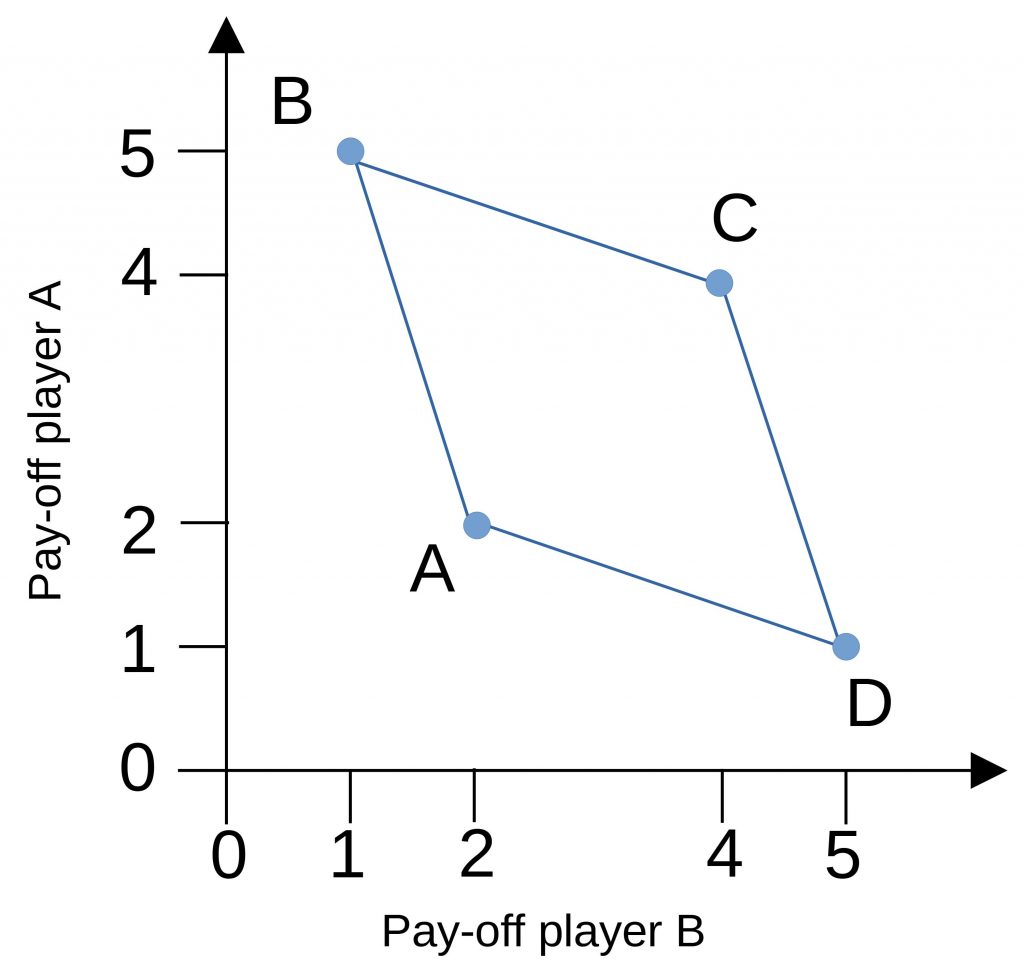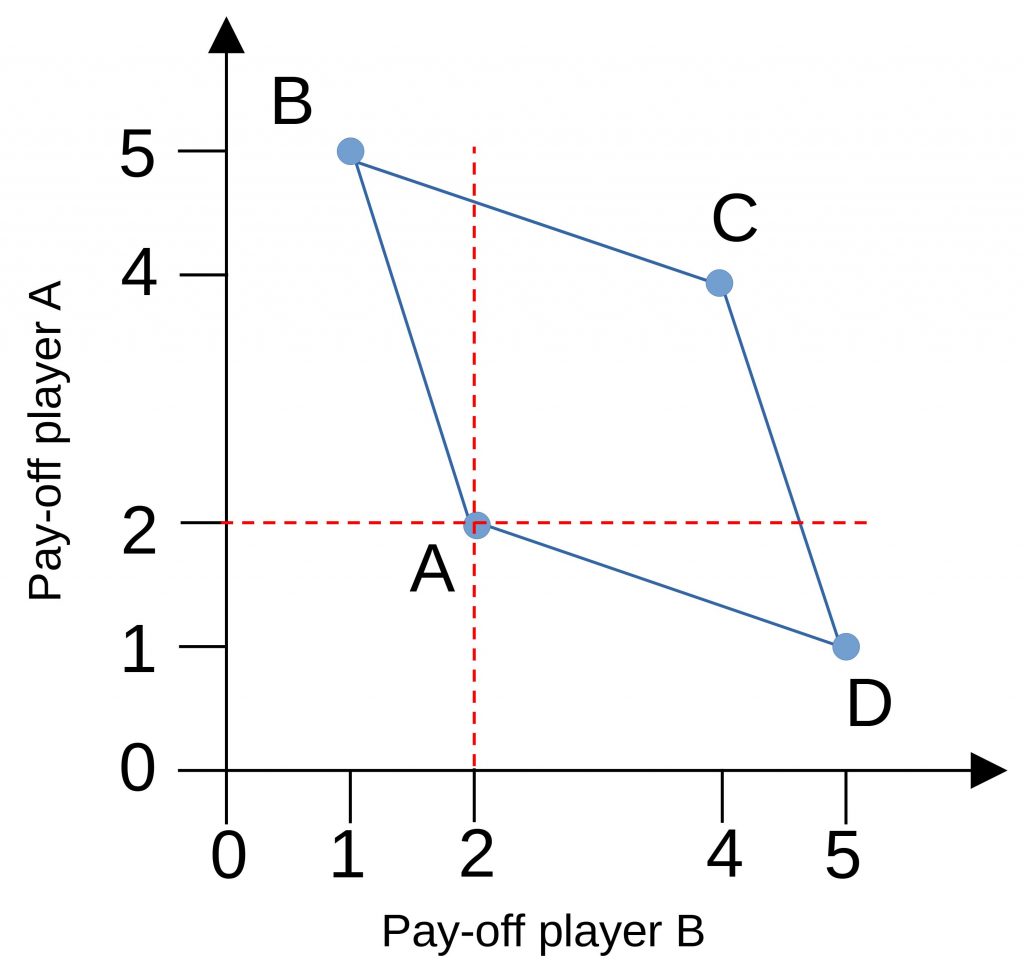Disagreement Point
Last Updated on 28. April 2023 by Martin Schuster
Disagreement points are values that players can expect to receive if the negotiation fails. The pay-off matrix shows a prisoner’s dilemma.

The question is, what pay-off each player would accept. If the negotiation fails, we have an uncooperative game with a Nash equilibrium in {right, down} with pay-offs of 2 for each player. This is what each player can expect minimally. Hence, the negotiation results must be higher than 2.

The point that marks the minimally acceptable pay-off in the negotiation is called the disagreement point.
However, it is not quite clear what exactly the disagreement point is. In the prisoner’s dilemma, we said it is the uncooperative Nash equilibrium.
Let’s consider this pay-off matrix.

There are two equilibria. In case of a negotiation failure, it is unclear what to expect. Using one of the Nash equilibria as a disagreement point would mean a pay-off of 5 for player B. But since the whole game is prone to coordination failures, B could end up in {left, down} or {right; up} earning zero.

 Register
Register Sign in
Sign in